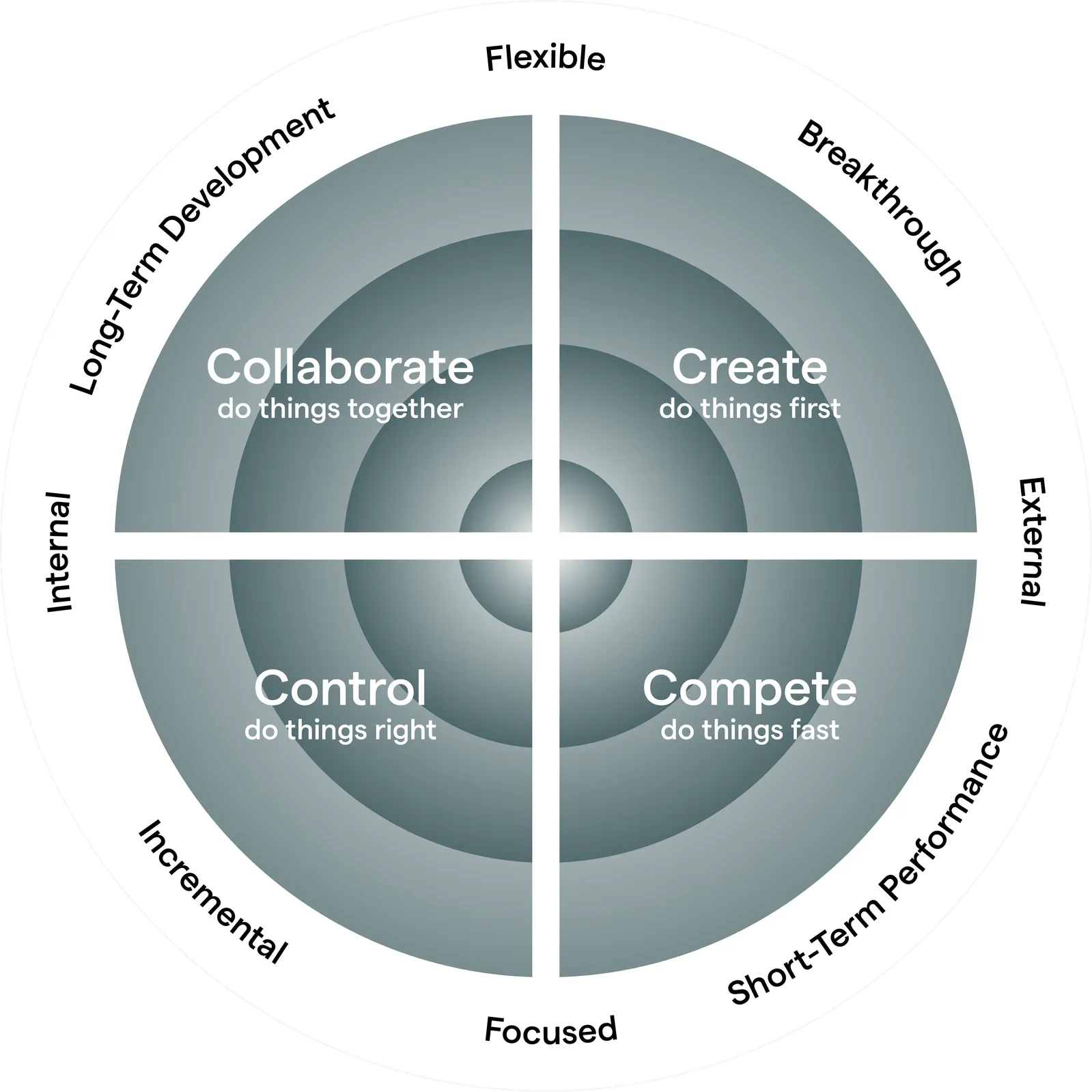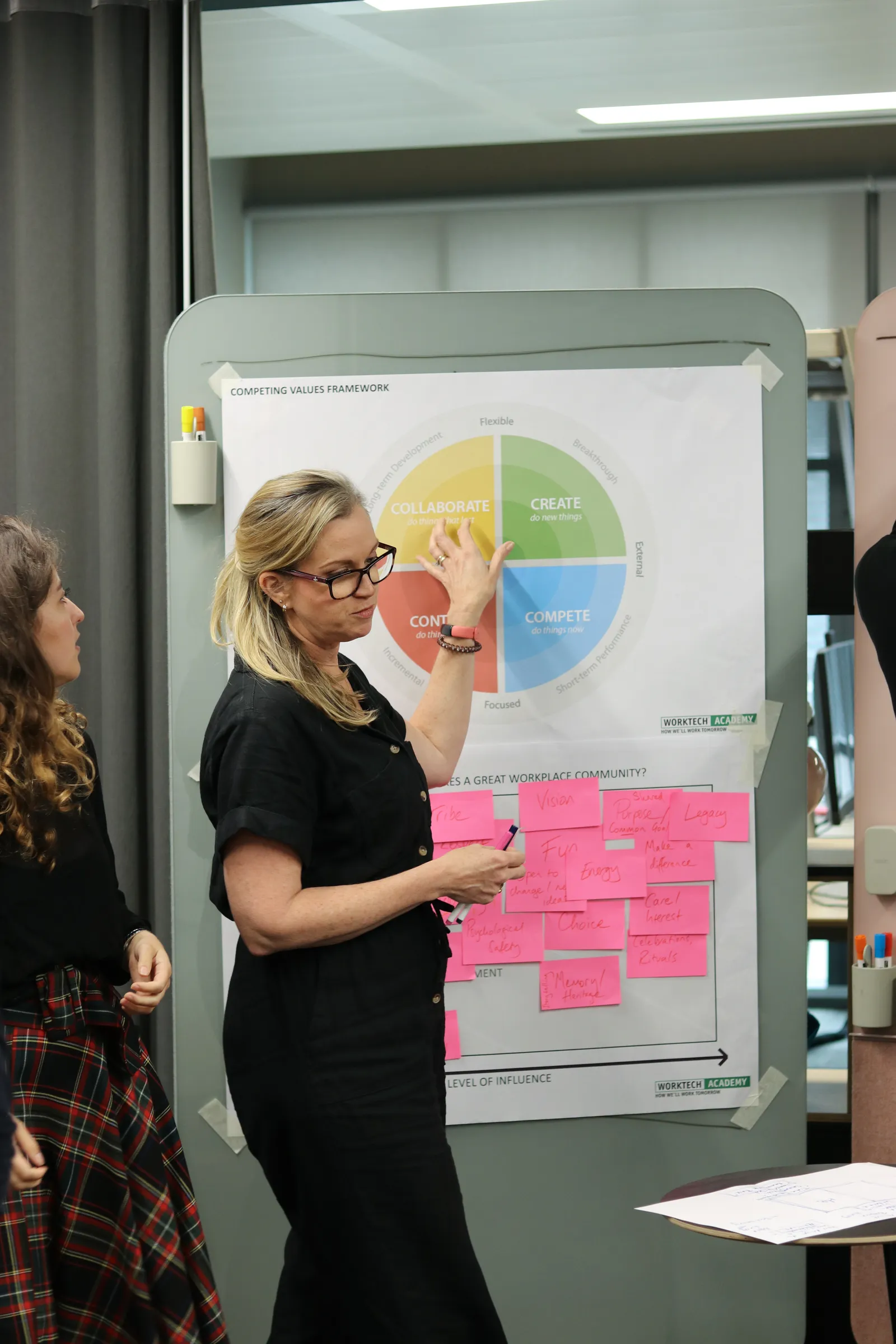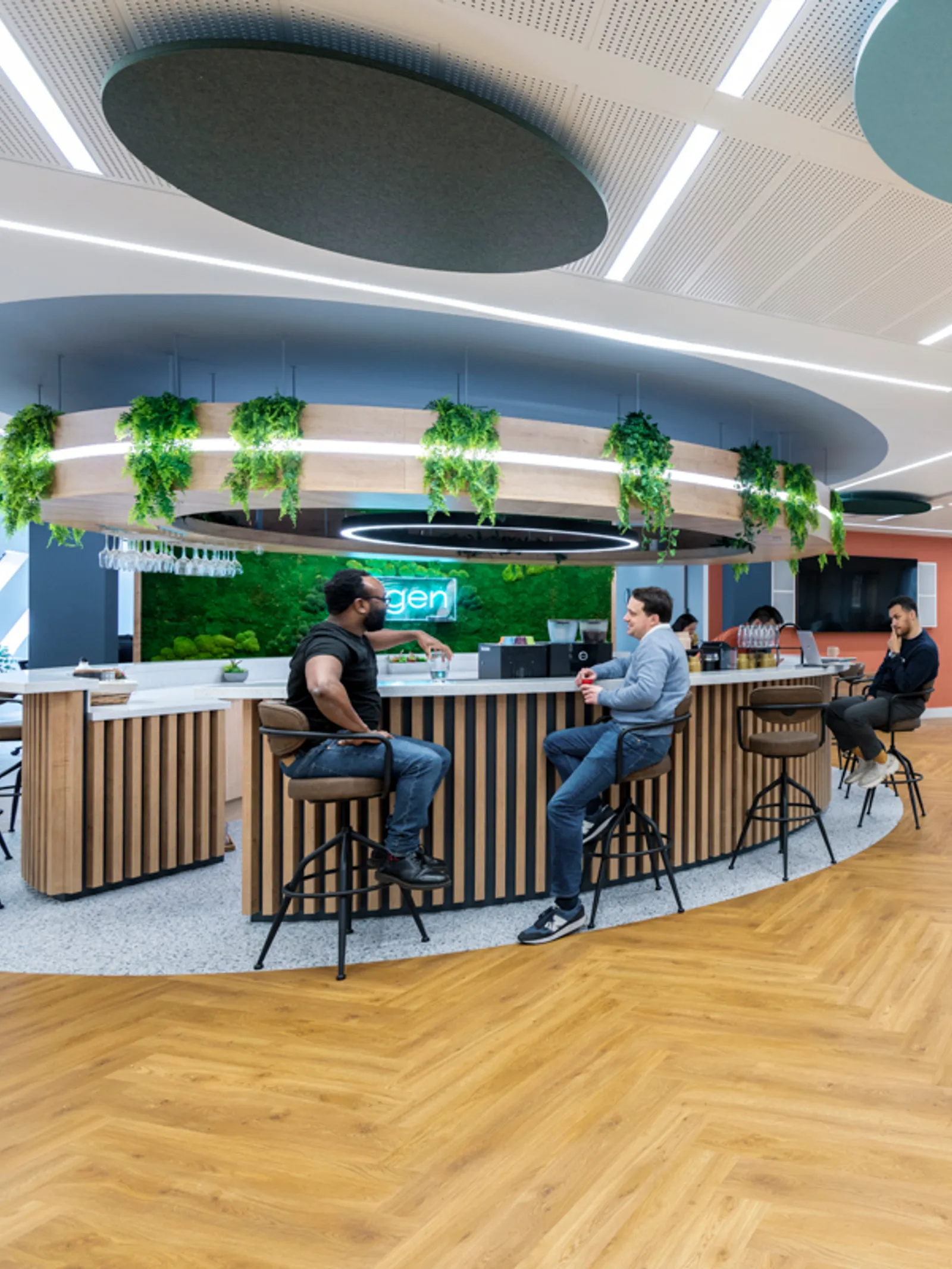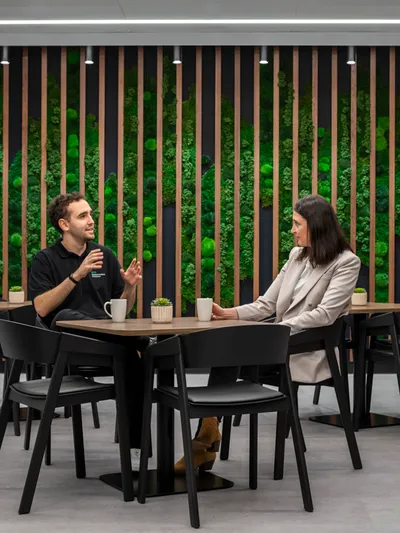In the second instalment of our series on fostering thriving workplace communities, we explore organisations with distinct cultures and examine how spatial and interior design can both express and enhance their cultural values.
Exploring the Intersection of Culture and Design
When Area organised a half-day creative workshop for our designers last autumn, focusing on building more effective workplace communities, the experience was enlightening.
Collaborating with WORKTECH Academy, an international knowledge platform dedicated to the future of work, the workshop revealed that organisations need to think carefully about the relationship between building community and building culture.
While these two aspects are often viewed as interchangeable, our workshop revealed that cultural values fundamentally shape how communities operate and behave, rather than the other way around. You can find our report on the workplace community workshop here.
This article delves deeper into one of the key workshop activities – a short design sprint aimed at exploring how different cultural values can be translated into spatial design concepts for workplace communities.

Participants were assigned four distinct workplace cultures ('Collaborate', 'Create', 'Control', and 'Compete') and tasked with designing office environments reflecting these values. These cultures were based on an academic model (refer to diagram above) originally developed by Professors Kim Cameron and Robert Quinn at the University of Michigan.
Here, we expand on the exercise and demonstrate how design can be a bridge between a set of cultural values and a thriving community.
Designing for Compete: Energising Market-Driven Environments
A ‘Compete’ culture is about doing things fast. It thrives on market-driven dynamics defined by high-energy, results-driven approaches, and celebrations of success. A competitive community demands a high-intensity environment with teams densely grouped together, boards showing sales results and bells clanging when targets are hit.
But behind the vibrant and bustling atmosphere, a well-structured support system is essential. It includes state-of-the-art technology in video conferencing rooms for online prospect meetings, designated spaces for relaxation and stress relief, and meticulous attention to acoustics in open-plan areas.
There might also be support services designed to keep people in the building for longer – a fully equipped kitchen, access to a gym, and an on-site restaurant. There might also be spaces for stand-up meetings where people come together at beginning of the day or week for quick team briefings. A trading floor in the City of London is a typical ‘compete’ community.
Crafting Create: Fostering Innovation Through Design
A 'Create' culture thrives on innovation. It embraces novelty, experimentation, and individuality, often termed as an 'adhocracy'. A creative community needs flexible project rooms and brainstorming spaces where collaboration is fluid.
The environment is hands-on, with reconfigurable walls and furniture allowing for various creative tasks. Localized storage facilitates easy access to materials, while smartboard technology digitises hand sketches for sharing—a blend of digital and analogue typical of create cultures. A design studio is a typical ‘create’ community, with its organic layout, informal group spaces and seemingly spontaneous activities.

Structuring Control: Balancing Rigidity and Flexibility
A 'Control' culture prioritises precision. It operates within a hierarchical structure defined by stability, rules, and protocols, often mandated by legal or business-critical requirements. Formal meeting rooms and limited access to specific areas characterise a controlled environment.
Despite its structured nature, a control community can incorporate elements of flexibility, facilitating social activities through a hub-and-spoke spatial model. Acoustic privacy and aesthetic quality are paramount, reflecting the meticulous nature of control cultures.
A government office or traditional law firm would fit the bill as a typical ‘control’ community, although many law firms are now abandoning this more rigid template.
Nurturing Collaborate: Building Strong Relationships in Community
A ‘Collaborate’ culture is about doing things together. This is a ‘clan’ culture defined by relationships, consensus, respect, and morale. Often described as one big family, a collaborate community requires a wide range of collaboration spaces – surprise, surprise – from team zones and project rooms to activity suites and large gathering spaces.
There is some crossover with the create community, but collaborative firms foster a stronger sense of belonging. Many collaborate communities are now hybrid hubs, supporting both in-person and remote collaboration. They often favour circular ‘campfire’ spatial arrangements for hybrid meetings so that all participants share on an equal basis.
Many life science research companies and institutes exemplify 'collaborate' communities.

The Four Cultures Model: Insights and Implications
Kim and Cameron's 'four cultures' model categorises organisations based on empirical analyses, claiming that nearly 90 per cent of organisations worldwide fall into one or more of these culture types.
Building a workplace community inevitably intersects with at least one of these cultures. While Create and Compete cultures focus externally, Collaborate and Control cultures have more internal orientations. Flexibility is inherent in Create and Collaborate cultures, while Compete and Control cultures prioritise focus.
However, all functional communities share common requirements: support, trust, purpose, and psychological safety. Our creative workshop highlighted that high-performing workplace communities also foster shared rituals and a sense of legacy.
In our third and final instalment, we explore four recent projects by Area, showcasing how cultural values are transformed into physical spaces that inspire purpose, meaning, and a sense of belonging. Discover more.
For expert guidance on creating a thriving workplace community tailored to your organisation, contact Area today.




